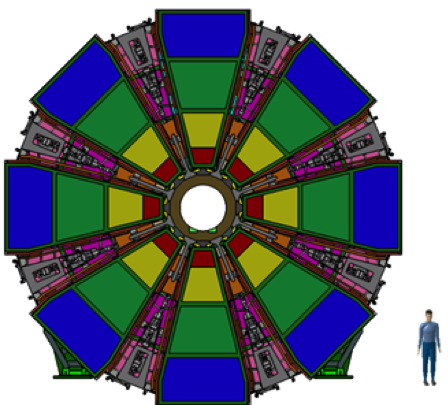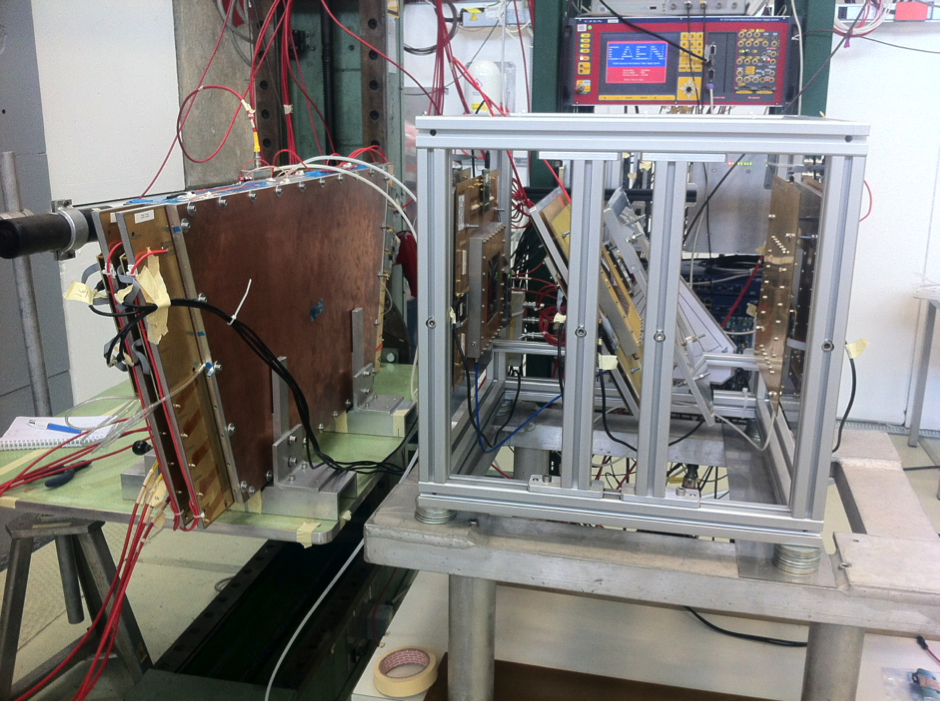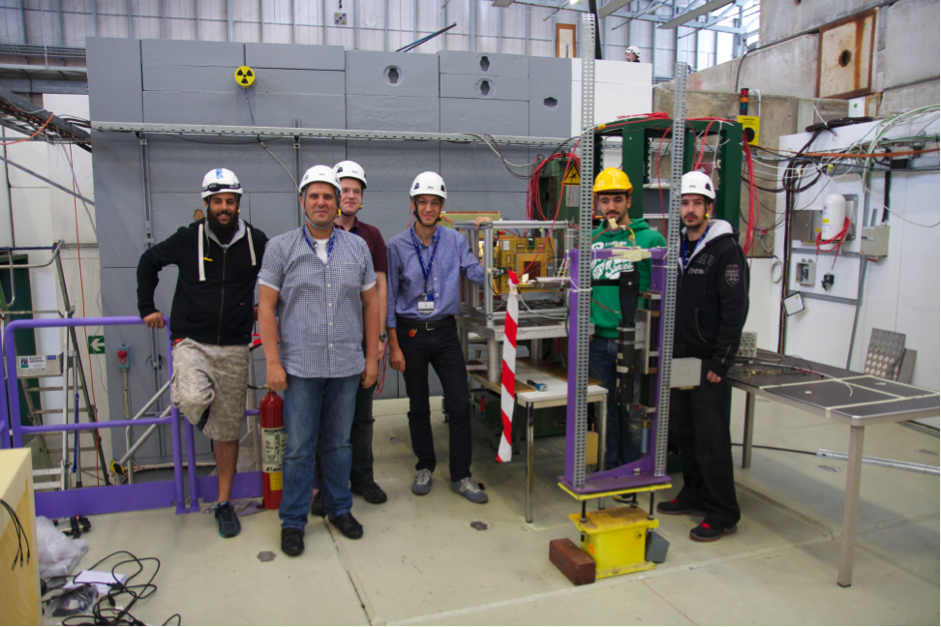ATLAS micromegas detectors tested in T9
 The upgrade of the ATLAS detector calls for a new generation of muon detectors capable of operating in a flux of collision and background particles approximately ten times larger compared to today's conditions. The new technology of micromegas detectors is one of the two detector technologies (along with the small-strip Thin Gap Chambers) that have been chosen for the upgrade of the ATLAS Muon Detector in the light of the LHC luminosity increase.
The upgrade of the ATLAS detector calls for a new generation of muon detectors capable of operating in a flux of collision and background particles approximately ten times larger compared to today's conditions. The new technology of micromegas detectors is one of the two detector technologies (along with the small-strip Thin Gap Chambers) that have been chosen for the upgrade of the ATLAS Muon Detector in the light of the LHC luminosity increase.
The new detectors that will be installed during the Phase 1 upgrade will cover an active surface of 1280 m2 and will offer unprecedented spatial resolution below one hundred micrometers and very high rate capability. The new technology also offers a larger sensitive area, operational stability and radiation hardness. Paolo Iengo, from PH-ADE-MU section, says: “Following a long R&D project for this generation of gaseous detectors, this technology, invented almost 20 years ago, is now mature enough to be used in our experiment” and continues “we are now mainly working on the detector construction in view of the mass production to be started next year in several European Institutes. We have to build the first final module at CERN by the end of this year”.

Fig. 1: The experimental setup for the micromegas test. On the left the four-layer micromegas prototype to be installed in the ATLAS experiment; on the right the tracking hodoscope with four precision detectors and two additional small prototypes inclined by 20 degrees with respect to the beam axis.
Moreover, to fulfil the requirements of the upcoming upgrade, prototypes of the micromegas detectors have been built and are currently tested using the T9 beam of the PS. “We are planning to test various experimental setups and is important that we have beam at CERN. Last year we ran some tests at DESY using electron beams but it is more practical to use the T9 beam as we get higher energies particles and there is an enormous logistic advantage in having the test beam site at CERN. In particular the PS area is close to our lab, it took us only few hours to install our set-up and have it ready for data taking“.
The team is currently testing the first prototype that was built at CERN following the successful collaboration between the PH-ADE and the PH-DT groups. The prototype has four active layers of a size of 0.5 m2 (about a quarter of the actual detector size that will be installed in ATLAS) and has been realised based on the same design of the final module. After the test at the PS, the prototype will be installed, in October, in the ATLAS cavern and fully integrated in the experiment for test purposes. It will be the first micromegas installed at the LHC experiments.
“This is the first test beam that we are using from the PS and we are very enthusiastic to get our first data. We are a large shift crew, about 40 people with many students and young colleagues, and we are able to run 24/7 and get as many data as possible during one week of data taking. The preparation of the test was very smooth and we had fruitful interactions with the other users running parasitically in the same line and with the PS-SPS coordination in general”. They are planning to test the performance of the four-layer prototype as well as to study the spatial resolution of the detectors for particles arriving at different angles. For the tests they are using a setup fully based on micromegas, with four high-precision chambers to be used as reference tracking detectors.

Fig. 2: (Part of) The team.
Finally, regarding their next steps, Paolo adds: “we will have another two-week period in the T10 line in September, another two-week at H6 in the SPS and finally in December we are planning to test the detector in the magnet in the SPS area”. Parallel to the tests the team is concentrated with the construction of the first final prototype for the experiment on which a long-term aging test will be performed next year at the new Gamma Irradiation Facility (GIF++) at the SPS beam line.
